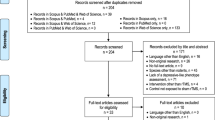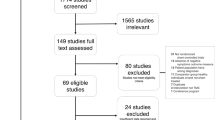Abstract
Repetitive transcranial magnetic stimulation (rTMS) has been found to exert modest to substantial antidepressant effects in the majority of prior clinical studies. As effect sizes and stimulation conditions have varied greatly, controversy persists regarding effective stimulation parameters (e.g. intensity, frequency, localization). In the present controlled study, we investigated whether the antidepressant efficacy of rTMS may be related to the stimulation intensity applied. Thirty-one patients suffering from a pharmacotherapy-resistant major depressive episode were randomly assigned to three treatment groups receiving rTMS at different stimulation intensities: (1) intensity at the individual motor threshold (MT); (2) 90% subthreshold intensity; and (3) low intensity of standard sham rTMS. Each patient underwent 10 sessions of 10 Hz rTMS with 1500 stimuli/day over the left dorsolateral prefrontal cortex. Improvement of depressive symptoms after rTMS significantly increased with stimulation intensity across the three groups. A 30% to 33% reduction of baseline depression scores was observed after rTMS at MT intensity. Similarly, groups differed significantly regarding the clinical course after rTMS with the lowest number of antidepressant interventions and the shortest hospital stay in the MT intensity group. These findings support the hypothesis of a relationship between stimulation intensity of rTMS and its antidepressant efficacy.
Similar content being viewed by others
Log in or create a free account to read this content
Gain free access to this article, as well as selected content from this journal and more on nature.com
or
References
Ben-Shachar D, Gazawi H, Riboyad-Levin J, Klein E . (1999): Chronic repetitive transcranial magnetic stimulation alters beta-adrenergic and 5–HT2 receptor characteristics in rat brain. Brain Res 816: 78–83
Berman RM, Narasimhan M, Sanacora G, Miano AP, Hoffman RE, Hu XS, Charney DS, Boutros NN . (2000): A randomized clinical trial of repetitive transcranial magnetic stimulation in the treatment of major depression. Biol Psychiatry 47: 332–337
Bohning DE, Shastri A, McConnell KA, Nahas Z, Lorberbaum JP, Roberts DR, Teneback C, Vincent DJ, George MS . (1999): A combined TMS/fMRI study of intensity-dependent TMS over motor cortex. Biol Psychiatry 45: 385–394
Boroojerdi B, Prager A, Muellbacher W, Cohen LG . (2000): Reduction of human visual cortex excitability using 1-Hz transcranial magnetic stimulation. Neurology 54: 1529–1531
Cerri G, De Leo R, Moglie F, Schiavoni A . (1995): An Accurate 3-D model for magnetic stimulation of the brain cortex. J Med Eng Tech 19: 7–16
Fleischmann A, Prolov K, Abarbanel J, Belmaker RH . (1995): The effect of transcranial magnetic stimulation of rat brain on behavioral models of depression. Brain Res 699: 130–132
Garcia-Toro M, Mayol A, Arnillas H, Capllonch I, Ibarra O, Crespi M, Mico J, Lafau O, Lafuente L . (2001): Modest adjunctive benefit with transcranial magnetic stimulation in medication-resistant depression. J Affect Disord 64: 271–275
George MS, Wassermann EM, Williams WA, Callahan A, Ketter TA, Basser P, Hallett M, Post RM . (1995): Daily left prefrontal repetitive transcranial magnetic stimulation (rTMS) improves mood in depression. Neuroreport 6: 1853–1856
George MS, Wassermann EM, Kimbrell TA, Little JT, Williams WE, Danielson AL, Greenberg BD, Hallett M, Post RM . (1997): Mood improvement following daily left prefrontal repetitive transcranial magnetic stimulation in patients with depression: A placebo-controlled crossover trial. Am J Psychiatry 154: 1752–1756
George MS, Lisanby SH, Sackeim HA . (1999): Transcranial magnetic stimulation. Arch Gen Psychiatry 56: 300–311
George MS, Nahas Z, Molloy M, Speer AM, Oliver NC, Li X-B, Arana GW, Risch SC, Ballenger JC . (2000): A controlled trial of daily left prefrontal cortex TMS for treating depression. Biol Psychiatry 48: 962–970
Grunhaus L, Dannon PN, Schreiber S, Dolberg OH, Amiaz R, Ziv R, Lefkifker E . (2000): Repetitive transcranial magnetic stimulation is as effective as electroconvulsive therapy in the treatment of nondelusional major depressive disorder: an open study. Biol Psychiatry 47: 314–324
Hallett M . (1996): Transcranial magnetic stimulation: a tool for mapping the central nervous system. Electroencephalogr Clin Neurophysiol (Suppl 46):43–51
Hamilton M . (1960): A rating scale for depression. J Neurol Neurosurg Psychiatry 23: 56–62
Helmchen H . (1990): Gestuftes Vorgehen bei Resistenz gegen Antidepressiva-Therapie. In Möller HJ (ed), Therapieresistenz unter Antidepressivabehandlung. New York, Springer, pp 237–250
Herwig U, Padberg F, Unger J, Spitzer M, Schonfeldt-Lecuona C . (2001): Transcranial magnetic stimulation in therapy studies: examination of the reliability of “standard” coil positioning by neuronavigation. Biol Psychiatry 50: 58–61
Jennum P, Friberg L, Fuglsang-Frederiksen A, Dam M . (1994): Speech localization using repetitive transcranial magnetic stimulation. Neurology 44: 269–273
Keck ME, Engelmann M, Müller MB, Henniger MSH, Hermann B, Rupprecht R, Neumann ID, Toschi N, Landgraf R, Post A . (2000): Repetitive transcranial magnetic stimulation induces active coping strategies and attenuates the neuroendocrine stress response in rats. J Psychiatr Res 34: 265–276
Keck ME, Welt T, Post A, Müller MB, Toschi N, Wigger A, Landgraf R, Holsboer F, Engelmann M . (2001): Neuroendocrine and behavioral effects of repetitive transcranial magnetic stimulation in a psychopathological animal model are suggestive of antidepressant-like effects. Neuropsychopharmacology 24: 337–349
Kimbrell TA, Little JT, Dunn RT, Frye MA, Greenberg BD, Wassermann EM, Repella JD, Danielson AL, Willis MW, Benson BE, Speer AM, Osuch E, George MS, Post RM . (1999): Frequency dependence of antidepressant response to left prefrontal repetitive transcranial magnetic stimulation (rTMS) as a function of baseline cerebral glucose metabolism [In Process Citation]. Biol Psychiatry 46: 1603–1613
Klein E, Kreinin I, Chistyakov A, Koren D, Mecz L, Marmur S, Ben-Shachar D, Feinsod M . (1999): Therapeutic efficacy of right prefrontal slow repetitive transcranial magnetic stimulation in major depression. Arch Gen Psychiatry 56: 315–320
Lisanby SH, Gutman D, Luber B, Schroeder C, Sackeim HA . (2001): Sham TMS: intracerebral measurement of the induced electrical field. Biol Psychiatry 49: 460–463
Loo C, Mitchell P, Sachdev P, McDarmont B, Parker G, Gandevia S . (1999): Double-blind controlled investigation of transcranial magnetic stimulation for the treatment of resistant major depression. Am J Psychiatry 156: 946–948
Loo CK, Taylor JL, Gandevia SC, McDarmont BN, Mitchell PB, Sachdev PS . (2000): Transcranial magnetic stimulation (TMS) in controlled treatment studies: are some “sham” forms active? Biol Psychiatry 47: 325–331
Manes F, Jorge R, Morcuende M, Yamada T, Paradiso S, Robinson RG . (2001): A controlled study of repetitive transcranial magnetic stimulation as a treatment of depression in the elderly. Int Psychogeriatr 13: 225–231
McCall W, Reboussin DM, Weiner RD, Sackeim HA . (2000): Titrated moderately suprathreshold vs fixed high-dose right unilateral electroconvulsive therapy. Arch Gen Psychiatry 57: 438–444
Montgomery S, Asberg M . (1979): A new depression scale designed to be sensitive to change. Br J Psychiatry 134: 382–389
Nahas Z, Lomarev M, Roberts DR, Shastri A, Lorberbaum JP, Teneback CC, McConnell KA, Vincent DJ, Li X, George MS, Bohning DE . (2001): Transcranial magnetic stimulation (TMS) produces intensity-dependent bilateral effects as measured by interleaved BOLD fMRI. Biol Psychiatry (in press).
Padberg F, Zwanzger P, Thoma H, Kathmann N, Haag C, Greenberg BD, Hampel H, Möller HJ . (1999): Repetitive transcranial magnetic stimulation (rTMS) in pharmacotherapy-refractory major depression: comparative study of fast, slow and sham rTMS. Psychiatry Res 88: 163–171
Pascual-Leone A, Valls-Solé J, Wassermann EM, Hallett M . (1994): Responses to rapid-rate transcranial magnetic stimulation of the human motor cortex. Brain 117: 847–858
Pascual-Leone A, Rubio B, Pallardó F, Catalá MD . (1996): Rapid-rate transcranial magnetic stimulation of left dorsolateral prefrontal cortex in drug-resistant depression. Lancet 348: 233–237
Sackeim HA, Prudic J, Devanand DP, Nobler MS, Lisanby SH, Peyser S, Fitzsimons L, Moody BJ, Clark J . (2000): A prospective, randomized, double-blind comparison of bilateral and right unilateral electroconvulsive therapy at different stimulation intensities. Arch Gen Psychiatry 57: 425–434
Wassermann EM . (1998): Risk and safety of repetitive transcranial magnetic stimulation: report and suggested guidelines from the International Workshop on the Safety of Repetitive Transcranial Magnetic Stimulation, June 5–7, 1996. Electroenceph Clin Neurophysiol 998: 1–16
Zyss T, Gorka Z, Kowalska M, Vetulani J . (1997): Preliminary comparison of behavioral and biochemical effects of chronic transcranial magnetic stimulation and electroconvulsive shock in the rat. Biol Psychiatry 42: 920–924
Acknowledgements
The authors wish to thank Dr. Florian Müller-Siecheneder, Dr. Thomas Frodl, Dr. Elisabeth Hofschuster and Dr. Ulrich W. Preuss for the clinical rating. They further thank Mrs. J. Klesing and Dr. Martin Strassnig for critically reading the manuscript. This project was supported by the German Federal Research Ministry within the promotional emphasis “Competence Nets in Medicine” (Subproject 4.5, M.E.K., Subproject 6.5, F.P.).
Author information
Authors and Affiliations
Corresponding author
Rights and permissions
About this article
Cite this article
Padberg, F., Zwanzger, P., Keck, M. et al. Repetitive Transcranial Magnetic Stimulation (rTMS) in Major Depression: Relation between Efficacy and Stimulation Intensity. Neuropsychopharmacol 27, 638–645 (2002). https://doi.org/10.1016/S0893-133X(02)00338-X
Received:
Revised:
Accepted:
Published:
Issue date:
DOI: https://doi.org/10.1016/S0893-133X(02)00338-X
Keywords
This article is cited by
-
Accelerated transcranial magnetic stimulation (aTMS) to treat depression with treatment switching: study protocol of a pilot, randomized, delayed-start trial
Pilot and Feasibility Studies (2021)
-
Repetitive Transcranial Magnetic Stimulation for Treatment-Resistant Depression: Recent Critical Advances in Patient Care
Current Treatment Options in Psychiatry (2021)



